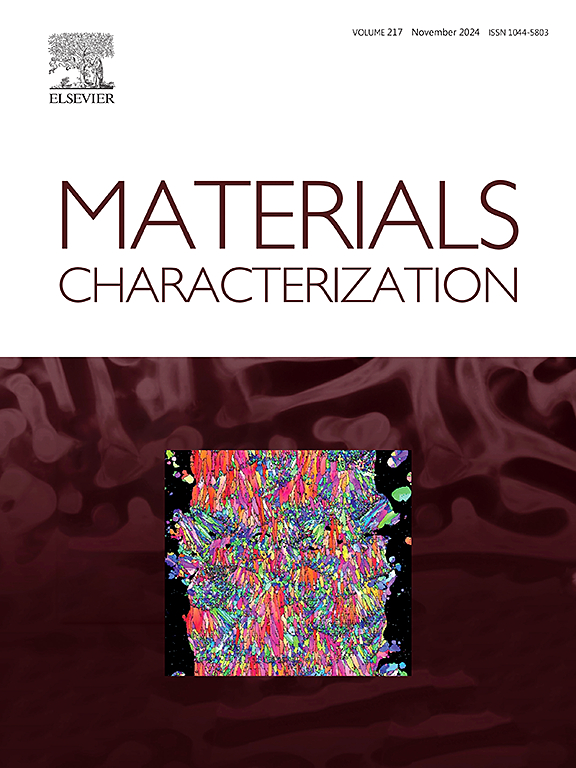Microstructure evolution and thermochemical interaction of dysprosia stabilized zirconia with CMAS attack
IF 4.8
2区 材料科学
Q1 MATERIALS SCIENCE, CHARACTERIZATION & TESTING
引用次数: 0
Abstract
Thermal/Environmental barrier coatings (T/EBCs) operating in environments laden with siliceous debris are increasingly vulnerable to degradation from molten calcium‑magnesium-alumina-silicate (CMAS) deposits. As a promising ceramic coating material, the microstructure evolution and thermochemical interaction of dysprosia stabilized zirconia (DySZ) with CMAS attack at 1250 °C were systematically investigated. The results indicate that CMAS preferentially corrodes the DySZ from their grain boundary. The inherent grain boundary segregation characteristics of solute Dy atoms provided a convenient channel for grain boundary corrosion. The thermochemical reaction between DySZ and CMAS leads to DySZ destabilization, which carried out through in-situ phase transformation and dissolution-recrystallization processes. It is proposed that improving DySZ corrosion resistance can be achieved by introducing pentavalent stabilizers to reduce Dy segregation or promoting the crystallization precipitation kinetics of CMAS. These findings may contribute to laying the foundation for the material design of ceramic surface layers in long-life T/EBCs systems.
氧化锆在CMAS作用下的微观结构演变及热化学相互作用
热/环境屏障涂层(T/ ebc)在充满硅质碎屑的环境中工作,越来越容易受到熔融钙镁铝硅酸盐(CMAS)沉积物的降解。作为一种极具发展前景的陶瓷涂层材料,系统研究了氧化锆(DySZ)在1250℃下的微观结构演变及其与CMAS攻击的热化学相互作用。结果表明,CMAS优先从晶界处腐蚀DySZ。溶质Dy原子固有的晶界偏析特性为晶界腐蚀提供了便利的通道。DySZ与CMAS之间的热化学反应导致DySZ失稳,失稳过程通过原位相变和溶解-再结晶过程进行。提出可以通过引入五价稳定剂来减少Dy偏析或促进CMAS的结晶析出动力学来提高其耐DySZ腐蚀性能。这些发现可能有助于为长寿命T/EBCs系统陶瓷表面层的材料设计奠定基础。
本文章由计算机程序翻译,如有差异,请以英文原文为准。
求助全文
约1分钟内获得全文
求助全文
来源期刊

Materials Characterization
工程技术-材料科学:表征与测试
CiteScore
7.60
自引率
8.50%
发文量
746
审稿时长
36 days
期刊介绍:
Materials Characterization features original articles and state-of-the-art reviews on theoretical and practical aspects of the structure and behaviour of materials.
The Journal focuses on all characterization techniques, including all forms of microscopy (light, electron, acoustic, etc.,) and analysis (especially microanalysis and surface analytical techniques). Developments in both this wide range of techniques and their application to the quantification of the microstructure of materials are essential facets of the Journal.
The Journal provides the Materials Scientist/Engineer with up-to-date information on many types of materials with an underlying theme of explaining the behavior of materials using novel approaches. Materials covered by the journal include:
Metals & Alloys
Ceramics
Nanomaterials
Biomedical materials
Optical materials
Composites
Natural Materials.
 求助内容:
求助内容: 应助结果提醒方式:
应助结果提醒方式:


